




 [Radtour Nord2]
[Radtour Nord2]
Dorsten's History - Station 16: The Town of Dorsten Translation: Lyn

Dorsten is a medium-sized town on the outskirts of the Ruhr Area "Ruhrgebiet". The approximately 76,000 inhabitants live in eleven districts of urban and also village character. The citizens of the nearby conurbations and also of Dorsten, profit from the location at the outskirts of the Ruhr Area.
Both visitors and citzens benefit from the short distances and optimal travel networks between the centres and the places of cultural interest or sport stadiums in the area - but Dorsten also has more than about 80% of arable land and woodlands and is hence an easily-reachable outdoor recreational space for the Ruhr Area.
In front of the "New" Townhall (neues Rathaus) at the address "Halterner Straße": The Mayor, Mr Lütkenhorst, officially opens the new history display board, sponsored by the "Sparkasse Vest", which presents facts from over 1111 years of Dorsten's history (890 to 2001).
|
Arnulf of Corinthia, King of East Francia, leads the fighting against the Normans and Slavs in Moravia.
| _ |
890 |
_ |
There is documentary evidence for the farming communities "Durstina" (a group of settlements north of the River Lippe) and "Durstinon" (a single settlement south of the River Lippe) situated in the oldest forests belonging to the monastery of Werden. In the area of the single settlement "Durstinon", in the 12th century, a small village with a church is established ("villa Dursten"). |
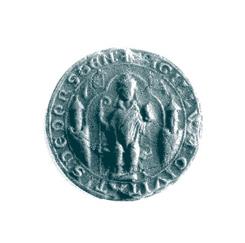 Town Seal from the 13th Century |
1251 |
_ |
On the 1st June, the sovereign ruler, the Archbishop of Cologne, Konrad von Hochstaden, bestowed the town charter on the small church village of Dorsten (defining its location, making it a market town, putting it under the jurisdiction of the town charter of Dortmund, under the self-administration of its citizens). | |
|
The Netherlands proclaim the republic.
| _ |
1588 |
_ |
The Archbishop of Cologne, who has become a Protestant, wants to have the "Town on the Lippe" |
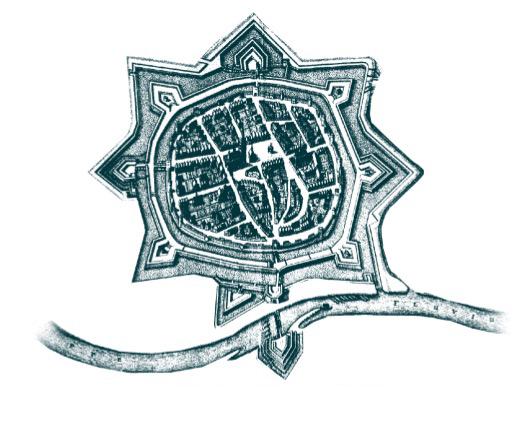 Merian Engraving, 1641 |
1633 |
_ |
During the Thirty Years War, the landgrave, Philipp of Hessen, conquers the town and builds it into his fortressed main domicile in West Phalia (Westfalen) . Eight years later, the imperial Count of Hatzfeld "Graf von Hatzfeld" conquers the Hessians and wins back Dorsten for the Archbishop of Cologne. | |
|
|
1815 |
_ |
Following the defeat of Napoleon, the Congress of Vienna transfers Dorsten to Prussia, in which state it remains for 130 years. At first, Dorsten belongs to the administrative district of Essen, is however already annexed to the new district of Recklinghausen by 1816. | |
|
|
1923 |
_ |
As part of the occupation of the Ruhr, Belgian troops march into Dorsten. They declare parts of Hervest and Holsterhausen to be military emergency zones because of the collieries and the station being within these areas. The Belgians carry out strict controls at the bridge over the River Lippe, the "Lippebrücke". | |
|
|
1929 |
_ |
The town authorities of Altschermbeck and Lembeck are dissolved and incorporated into the town authority of Hervest-Dorsten. To this authority belong the communities of Altschermbeck, Erle, Hervest, Holsterhausen, Lembeck, Rhade and Wulfen. The town has approximately 10,000 inhabitants, following the incorporation of the district of Dorsten-Hardt. | |
|
Japan conquers large areas of China.
| _ |
1937 |
_ |
In order to reduce administration costs, the chairman of the regional council orders the incorporation of the town of Dorsten into the local authority of Hervest-Dorsten. |
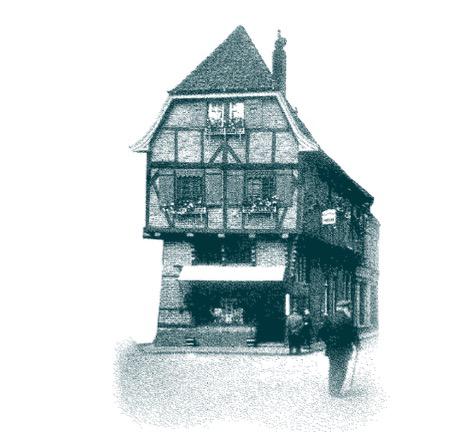 Old Town of Dorsten: Drubbel, destroyed in 1945 |
1943 |
_ |
The municipal area is extended, for economic, cultural, transport and housing reasons, to include the communities of Hervest and Holsterhausen. The population of Dorsten reaches about 28,000, as a consequence. | |
|
On 26th June, 51 nations approve the United Nations Charter.  End of he War 1945 | _ |
1945 |
_ |
Almost 80% of the centre of the town is destroyed by bombing raids on 9th and 22nd March. More than 300 people meet their death, as a consequence. |
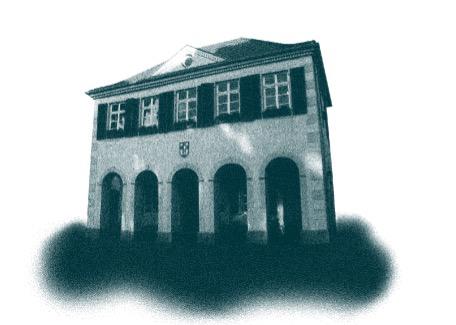 Old Town Hall |
1975 |
_ |
Following the municipal re-organisation, the town along with the (up until then) independent communities of Altendorf-Ulfkotte, Lembeck, Rhade and Wulfen, as well as the western part of the Hardt and Östrich, the farming community of Emmelkamp and parts of the farming community of Ekel form the new town of Dorsten. | |
|
|
2001 |
_ |
The town celebrates its 750th Jubilee. |
[zurück]
Daten und Fakten
Eröffnung - 1st October 2003
Adresse - The main entrance of the town hall.
Geodaten - 51°40'12 6°58'08.13
Feierliche Übergabe am Am 1. Oktober 2003
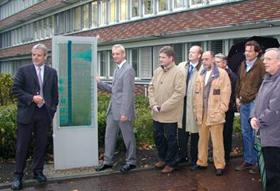
Miasto obchodzi swoje 750-lecie.

